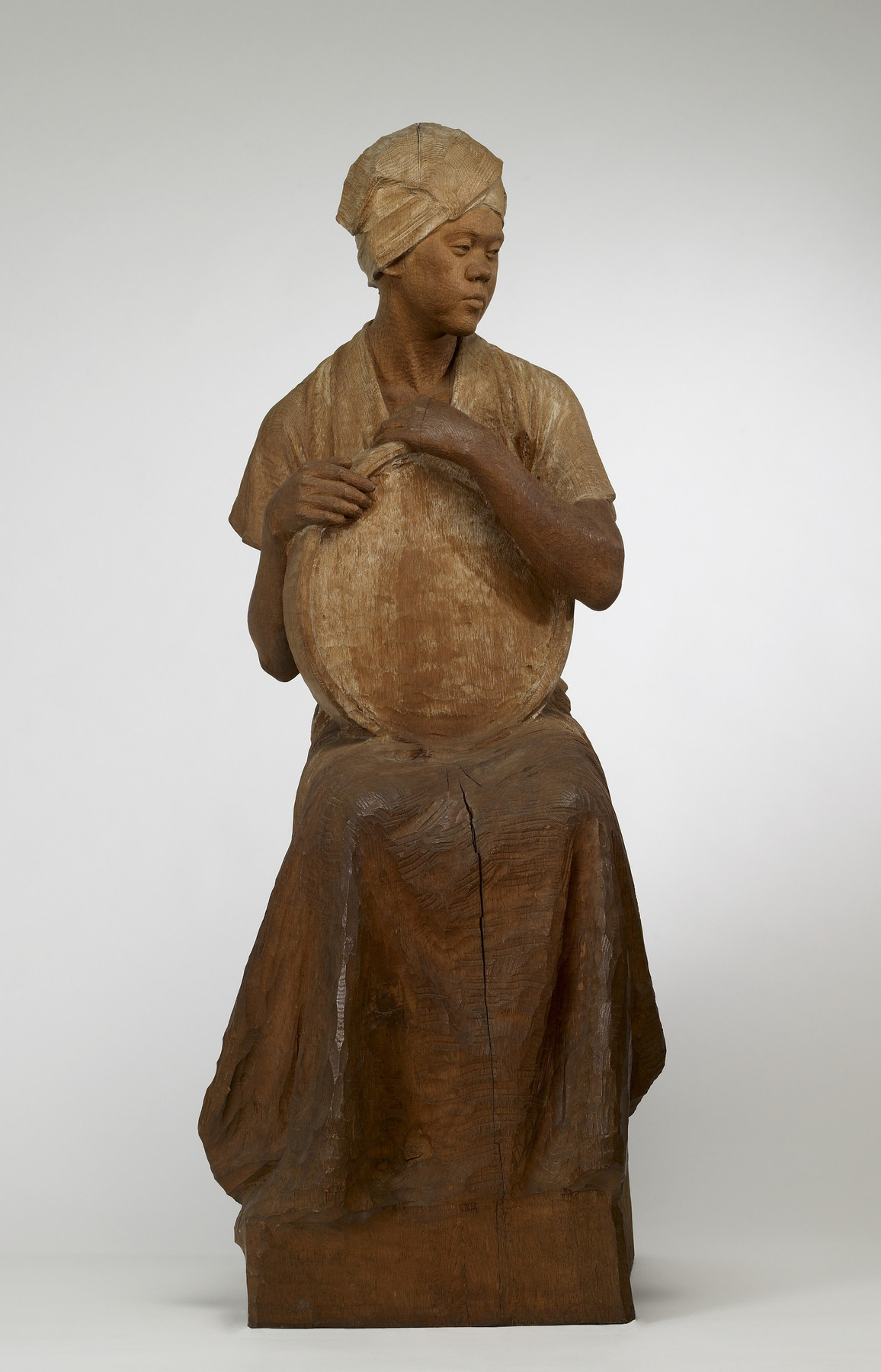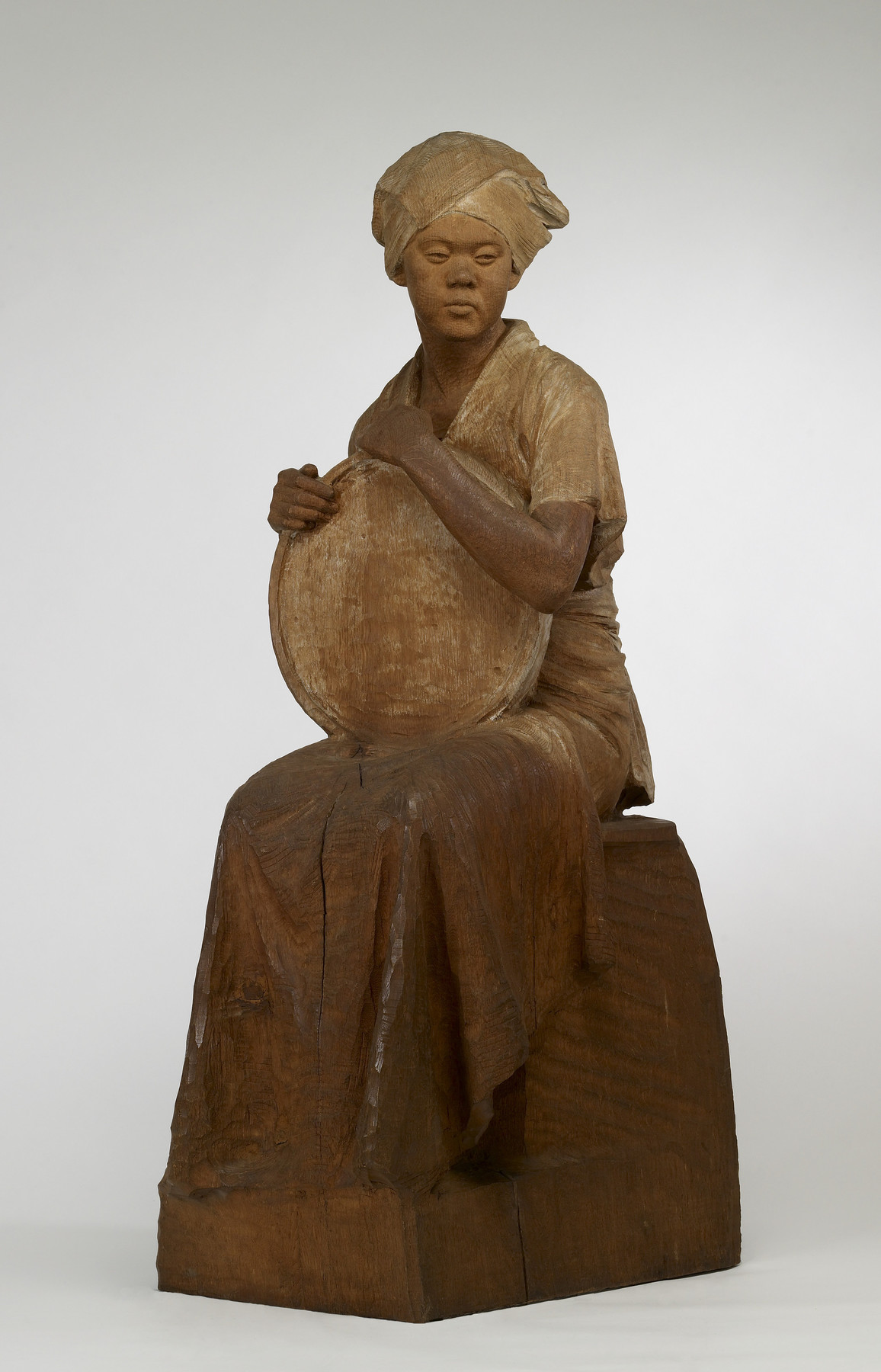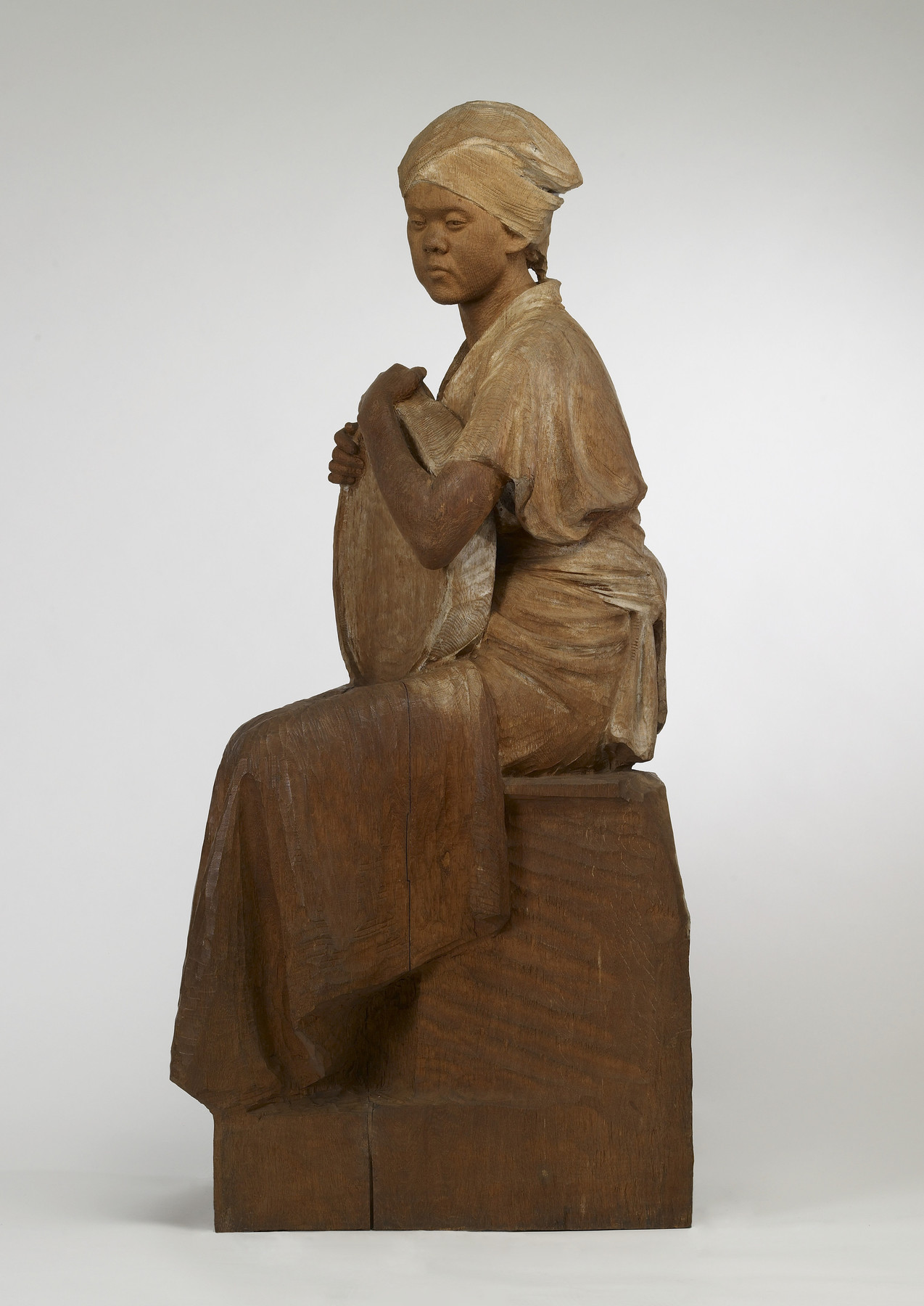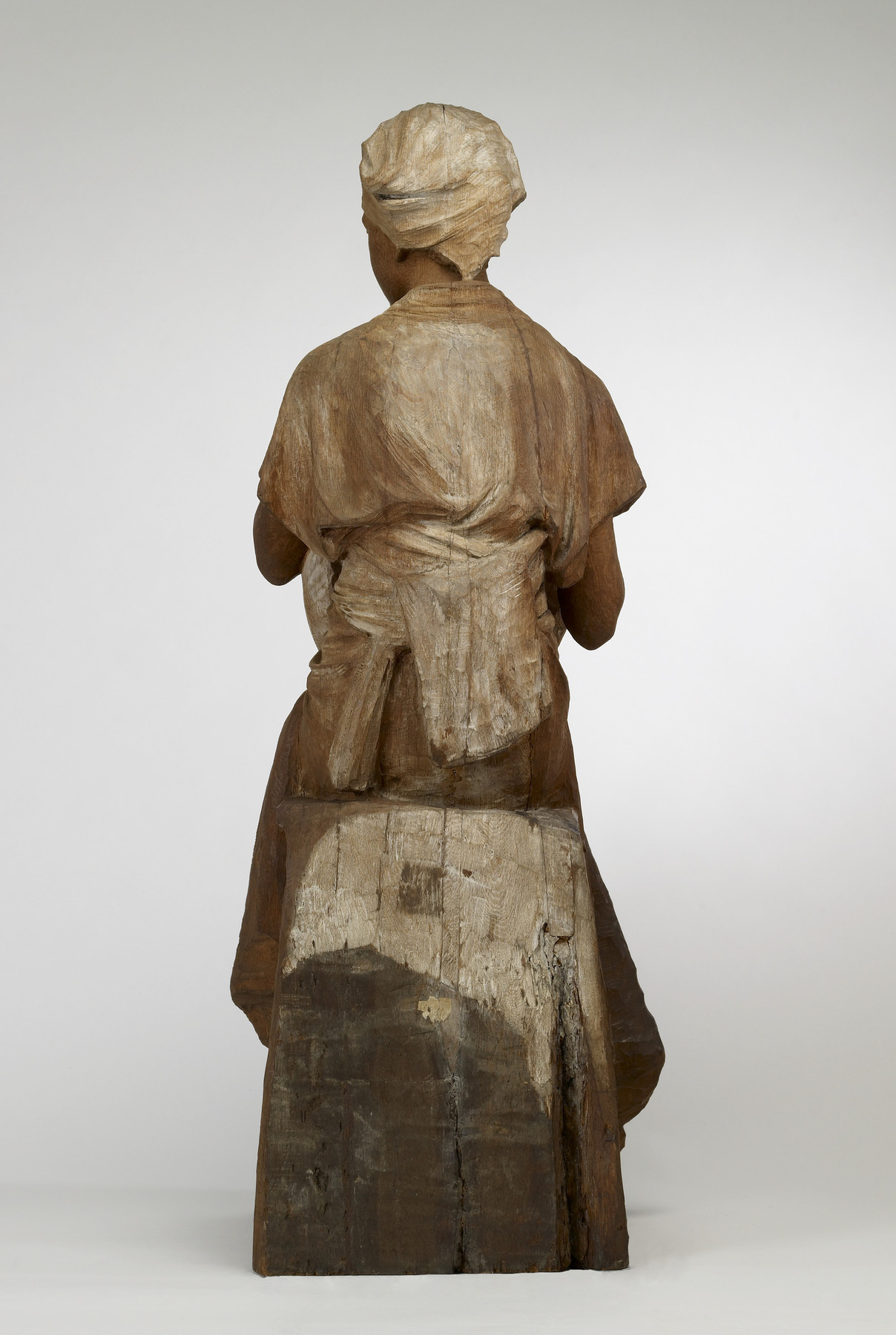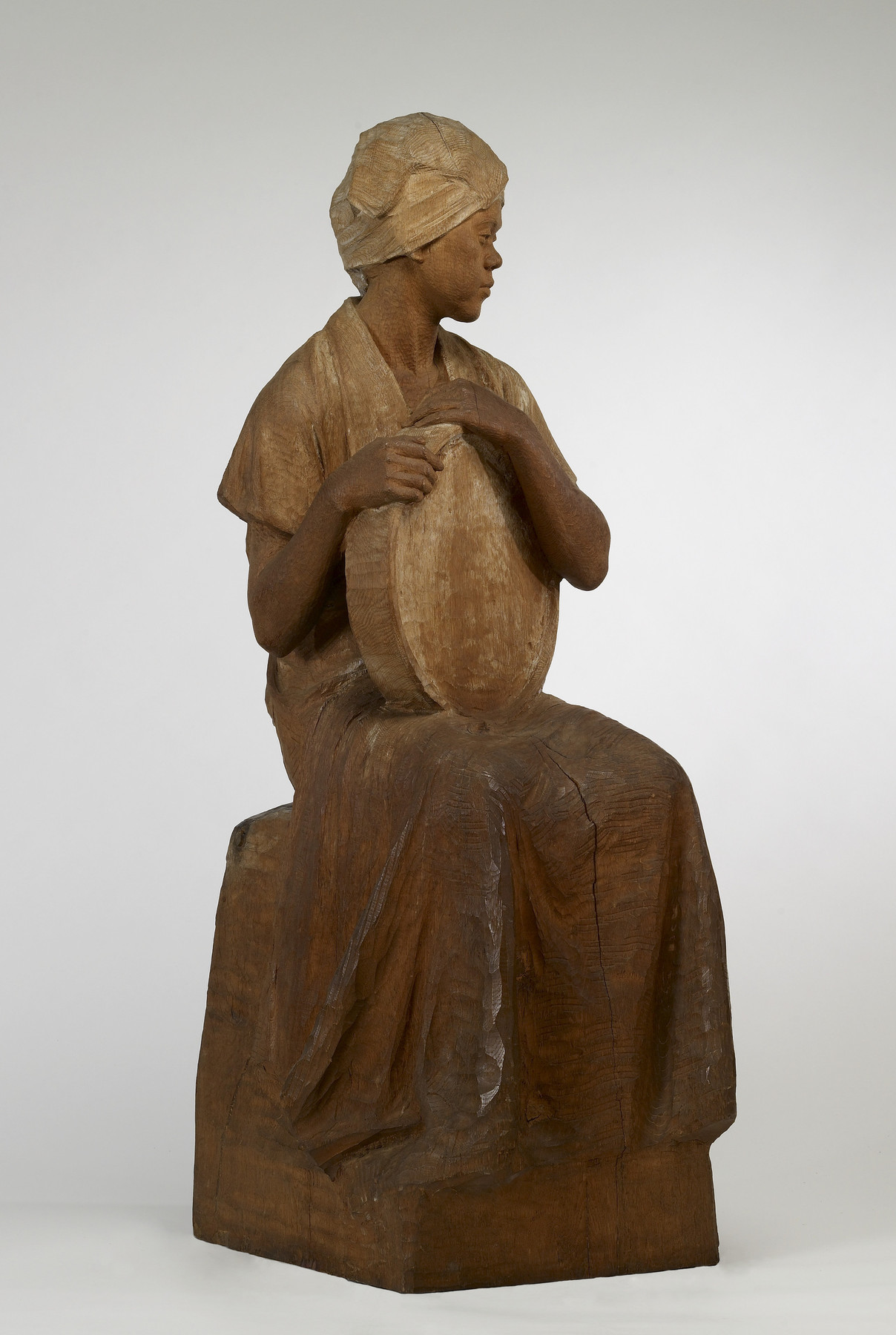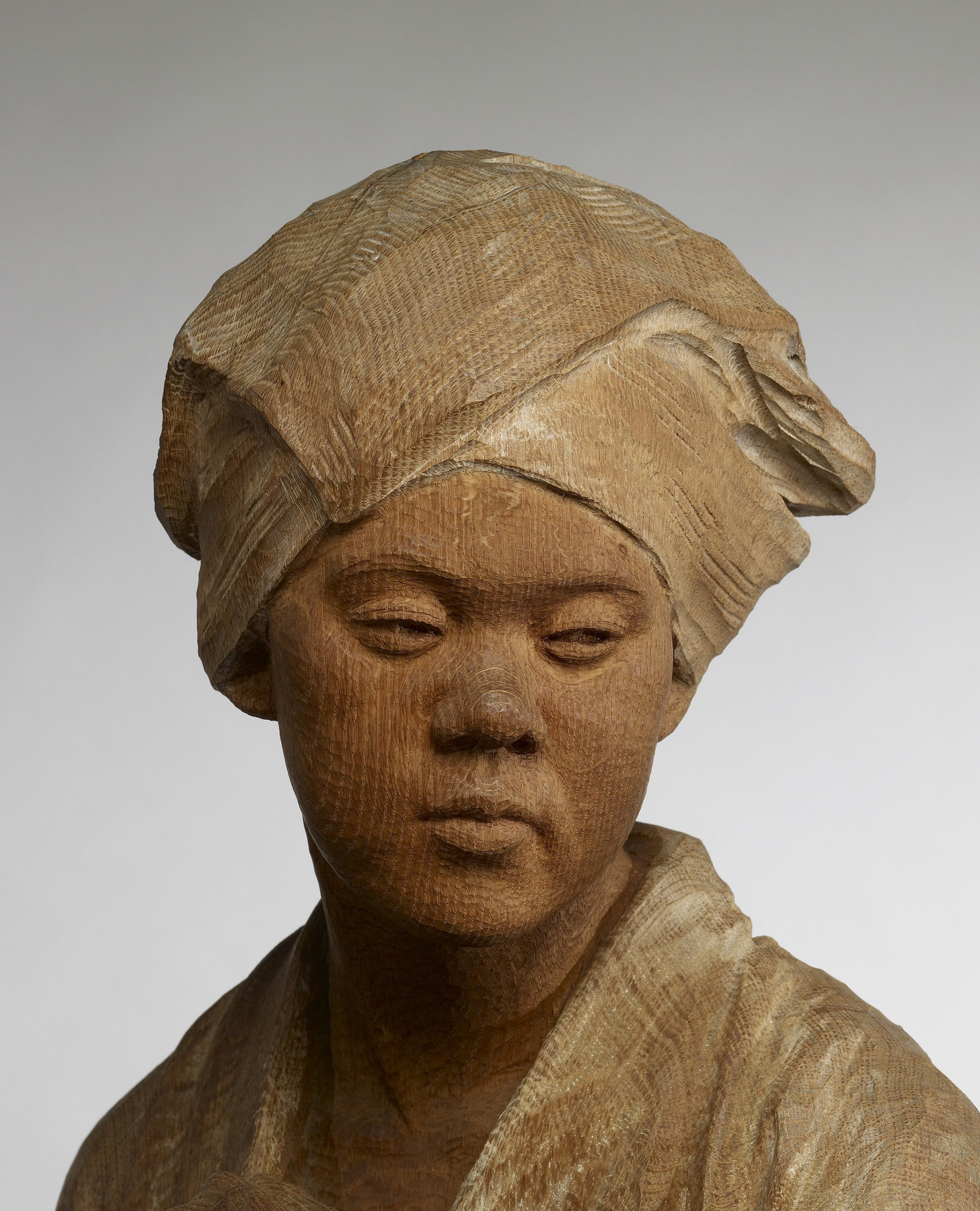Arayori (A Peasant Woman)
(Japan and Korea )
Artist Yoshida Hōmei was awarded a gold medal for this sculpture. The work reveals an idealizing nostalgia for rural life following Japan’s rapid modernization and aggressive international engagement in the Meiji period (1868–1912). Hōmei carved into the wood a wonderful expressiveness for the woman’s face and shaped her posture and clothing into a lifelike rendering of a peasant woman perhaps resting from a hard day’s work.
Provenance
Provenance (from the French provenir, 'to come from/forth') is the chronology of the ownership, custody, or location of a historical object.
The Panama-Pacific International Exhibition, San Francisco, 1915; Henry Walters, Baltimore, 1915 [mode of acquisition unknown]; Walters Art Museum, 1931, by bequest.
Exhibitions
| 2014-2016 | From Rye to Raphael: The Walters Story. The Walters Art Museum, Baltimore. |
Conservation
| Date | Description | Narrative |
|---|---|---|
| 5/9/2014 | Treatment | cleaned; examined for exhibition; inpainted |
Geographies
Japan, Tokyo (Place of Origin)
Measurements
H: 52 3/8 × W: 21 × D: 24 in. (133 × 53.3 × 61 cm)
Credit Line
Acquired by Henry Walters, 1915
Accession Number
In libraries, galleries, museums, and archives, an accession number is a unique identifier assigned to each object in the collection.
In libraries, galleries, museums, and archives, an accession number is a unique identifier assigned to each object in the collection.
25.2

